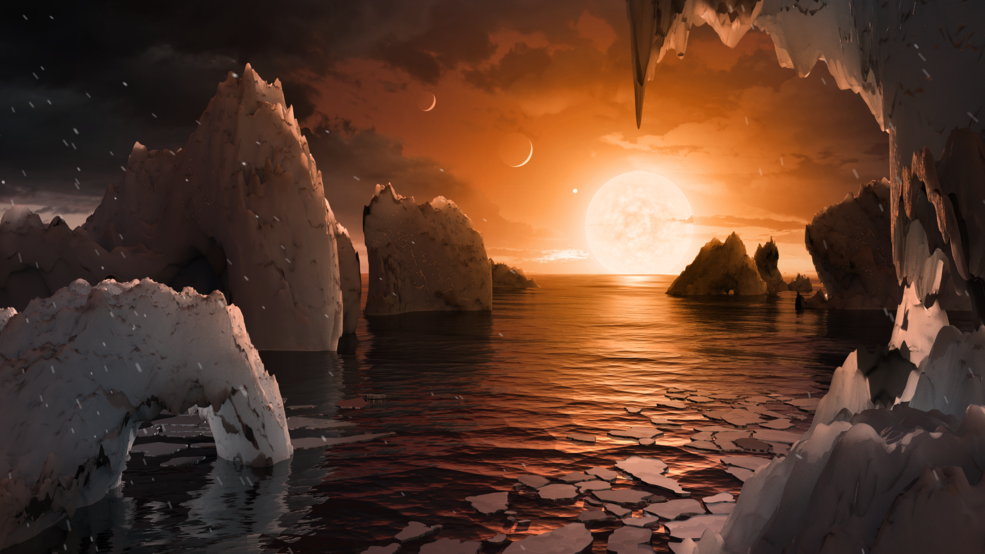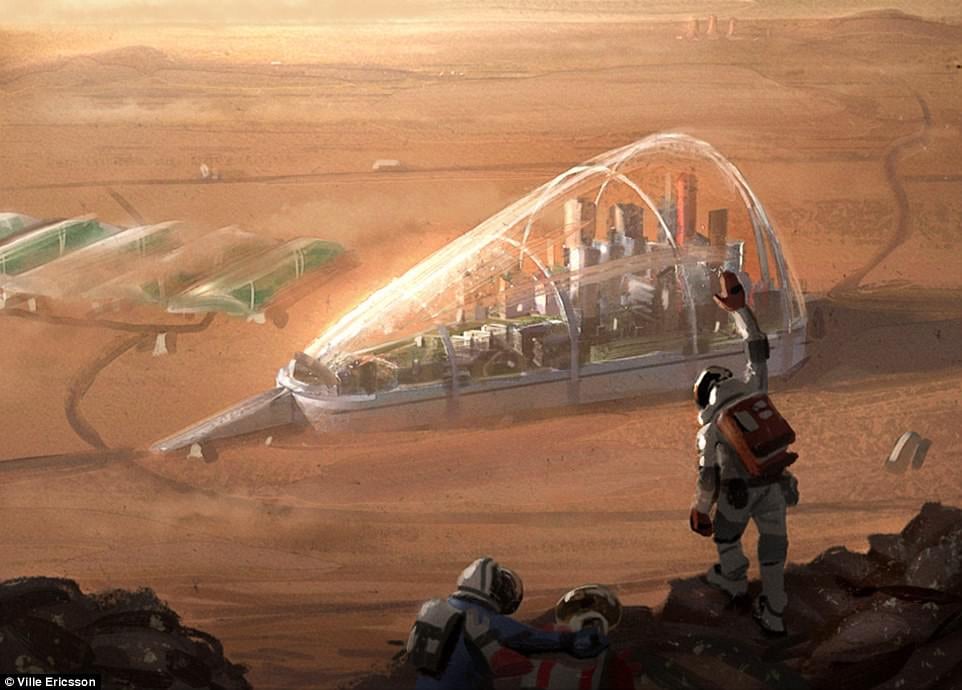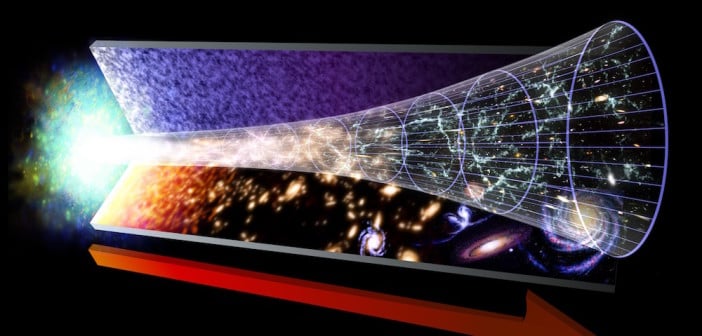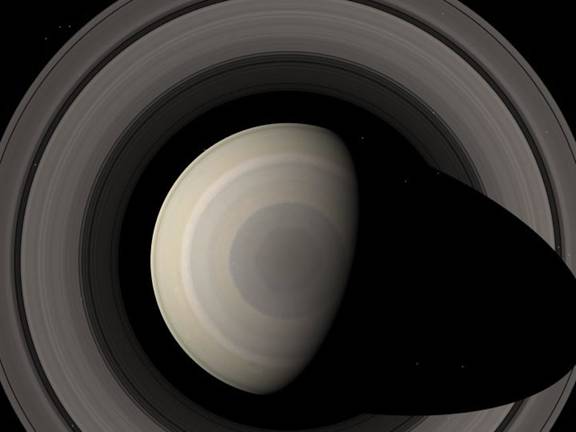
In what is the biggest announcement in exoplanet-hunting history, NASA has announced the discovery of seven rocky exoplanets around a single star, three of which are potentially-habitable
Continue reading

Continue reading

As the second closest planet to our Sun, Venus takes 224.65 days to complete a single orbit around our Sun, making a year on Venus 61.5% as long as a year on Earth.
Continue reading

During the 5th World Government Summit, the United Arab Emirates announced a bold plan to build a permanent settlement on Mars.
Continue reading

A new geophysical definition has been proposed by a team of planetary scientists, one which would result in a Solar System of 110 planets.
Continue reading

Continue reading

Continue reading

Located about 28,000 light years away in the northern constellation of Gemini is the large open star cluster known as Messier 35.
Continue reading

KENNEDY SPACE CENTER, FL - After a six year lull NASA's historic pad 39A roared back to business this morning with the dramatic maiden blastoff of a SpaceX Falcon 9 rocket, on a critical cargo delivery mission for NASA to the space station - while simultaneously landing the first stage back on the ground at the Cape on a secondary mission aimed at one day propelling humans to Mars.
Continue reading

After months of review, Juno's mission scientists have chosen not to attempt an engine burn that will reduce its orbital period.
Continue reading

KENNEDY SPACE CENTER, FL - Just hours before blastoff, the first ever SpaceX Falcon 9 set to soar to the space station from historic pad 39A at NASA's Kennedy Space Center (KSC), the rocket went vertical below delightfully dark skies on the Florida Space Coast.
Continue reading

Curving wriggles seen in sand dunes on Earth and formed by the recent ebb and flow of water have just been found on Mars.
Continue reading

A new study by an international team of scientists uses data provided by the Dawn probe to show that conditions favorable to life could exist on Ceres
Continue reading

Data collected over decades proves that Earth has another continent: Zealandia.
Continue reading

The Big Bang Theory predicts three times as much lithium as observed. Where are the scientists hiding our lithium?
Continue reading

Continue reading

Continue reading

Continue reading

Continue reading

Continue reading

Much like Jupiter, Saturn is known for having some pretty extreme weather, owing to its turbulent atmosphere and rapid rotation
Continue reading

KENNEDY SPACE CENTER, FL - In a potentially major change in direction for NASA's human spaceflight architecture, the agency is officially studying the possibility of adding a crew of astronauts to the first flight of the Orion deep space crew capsule and the heavy lift Space Launch System (SLS) rocket currently in development, announced Acting NASA Administrator Robert Lightfoot.
Continue reading

Watch Comet 45P pirouette end over end in this detailed radar view of the comet's nucleus.
Continue reading

With the successful launch of 104 satellites, the Indian National Space Organization has set a new record for the number of satellites deployed in a single mission.
Continue reading

Owing to its rapid orbital period, a year on Mercury lasts about 88 days, which means a year is only half as long as a single day
Continue reading

The Trump administration is considering a plan to extend the Hubble's life in case the James Webb Space Telescope fails.
Continue reading

Astronomers get a rare opportunity to observe the first hours of a supernova's collapse.
Continue reading

Using the initial data released by the Gaia observatory, a team of Canadian astrophysicists have produced refined estimates on the distance between our Sun and the center of the galaxy.
Continue reading

Continue reading

By analyzing samples of glass formed at the Trinity nuclear test sight, a team of scientists has helped resolve the mystery of how the Moon was formed.
Continue reading

Continue reading

SPACE VIEW PARK/KENNEDY SPACE CENTER, FL - For the first time in more than half a decade, a rocket came to life at NASA's Kennedy Space Center when a SpaceX Falcon 9 breathed her first fire at historic pad 39A today, Sunday, Feb. 12 - successfully completing a critical static test firing of the first stage engines that opens the door to a launch to the space station next weekend for NASA.
Continue reading

New asteroid 2017 BQ6 was all elbows when it flew by Earth just a few days ago. Images reveal it as one of the most "angular" near-Earth asteroids known.
Continue reading

Using 1000 images taken by amateur astronomer, filmmaker Peter Rosen has created a film that takes viewers on virtual journey to Jupiter.
Continue reading

KENNEDY SPACE CENTER, FL - The first SpaceX Falcon 9 rocket ever to grace historic launch pad 39A at NASA's Kennedy Space Center in Florida was erected this afternoon, Friday, Feb. 10, to prepare the booster for a critical static fire sometime
KENNEDY SPACE CENTER, FL - The first SpaceX Falcon 9 rocket ever to grace historic launch pad 39A at NASA's Kennedy Space Center in Florida was erected this afternoon, Friday, Feb. 10, to prepare the booster for a critical static fire sometime Saturday, and a launch next weekend - if all goes well.
Continue reading

Compared to other Solar planets, Earth is kind of average. And given its shape, determining its surface area is a but complicated.
Continue reading

Located in the southern skies is the classic constellation Centaurus, the ninth largest constellation and one of the original 48 included by Ptolemy in his Almagest.
Continue reading

NASA has made progress developing electronics that can withstand Venus' extreme surface environment.
Continue reading

Continue reading

Continue reading

Take a gander at this high resolution view of Europa and learn of NASA's plans to look for life there.
Continue reading

In a significant move towards further expansion of the International Space Station's (ISS) burgeoning research and commercial space economy capabilities, NASA has approved the development of the first privately developed airlock and is targeting blastoff to the orbiting lab complex in two years.
Continue reading

We've got all this nuclear waste to dispose of, and we've got this superheated fusion ball in the sky. Couldn't we just blast our nuclear waste into the Sun and be done with it?
Continue reading

In the southern hemisphere this weekend in the 'Land of Oz?' Are you missing out on the passage of Comet 45/P Honda-Mrkos-Pajdušáková, and the penumbral lunar eclipse? Fear not, there's an astronomical event designed just for you, as the Moon occults (passes in front of) the bright star Regulus on the evening of Saturday, January 11th.
Continue reading

A bridge of stars between the Magellanic Clouds helps unravel a mystery.
Continue reading

Uber recently announced that they have hired NASA engineer Mark Moore to spearhead the company's VTOL transit program, known as Uber Elevate.
Continue reading

A soccer ball on the ISS pays tribute to the seven astronauts who died in the Challenger disaster.
Continue reading

Continue reading

Using data obtained from rock samples since 2011, one of Curiosity's science teams has deduced that ancient Mars did not have enough carbon dioxide to maintain liquid water
Continue reading

Images of Enceladus highlight its frozen, reflective beauty, and its potential as a cradle for life.
Continue reading

 Universe Today
Universe Today














































